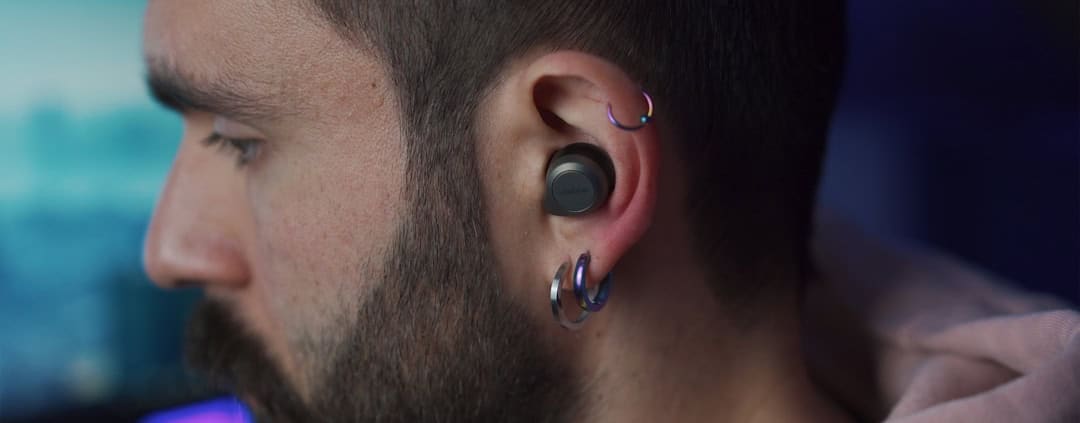Piercing and Self-Expression: Unleash Your Inner You
Body modification through piercing has been practised for millennia, with archaeological evidence indicating its presence in ancient civilisations such as the Egyptians, Romans and Mayans. In numerous cultures, piercings served as indicators of status, wealth or spiritual significance. For instance, in ancient Egypt, navel piercings were exclusively reserved for the pharaoh and royal family members.
Ancient Roman soldiers pierced their nipples as a demonstration of strength and virility. Certain Native American tribes regarded nose piercings as symbols of affluence and social standing. In contemporary society, piercing has evolved into a widespread form of self-expression and personal adornment.
The punk and alternative subcultures of the 1970s and 1980s played a crucial role in popularising body piercings as a means of challenging societal norms and expressing individuality. Presently, piercings are a common method of self-expression and are often viewed as a way to enhance one’s physical appearance and showcase personal style. From ear piercings to facial and body modifications, the practice has developed into a mainstream form of self-expression embraced by individuals of various ages and backgrounds.
Summary
- Piercing has been used as a form of self-expression for centuries, with evidence of its practice dating back to ancient civilizations.
- Different types of piercings, such as ear, nose, and body piercings, hold various cultural and personal meanings, often symbolizing identity, status, or spirituality.
- Piercing can be a form of personal empowerment, allowing individuals to take control of their bodies and make a statement about their identity and beliefs.
- Piercings carry cultural and social significance, with certain piercings being more prevalent in specific cultures and communities, often representing rites of passage or group affiliation.
- Proper care and maintenance of piercings is crucial to prevent infection and promote healing, including cleaning with saline solution and avoiding harsh chemicals or excessive touching.
- Piercing can challenge stereotypes and embrace individuality, allowing individuals to defy societal norms and express their unique personalities.
- Finding the right piercing for your personal style and identity involves considering factors such as placement, jewellery options, and personal meaning, to ensure it aligns with your self-expression and aesthetic preferences.
Different Types of Piercings and Their Meanings
Ear Piercings: A Timeless Classic
Ear piercings are perhaps the most common and versatile form of piercing, with options such as lobe, cartilage, tragus, and helix piercings. Ear piercings have been popular for centuries and are often seen as a way to enhance one’s beauty and individuality.
Facial Piercings: A Form of Self-Expression
Nose piercings, including nostril and septum piercings, have been a part of various cultural traditions and are often associated with spirituality and rebellion. Facial piercings such as eyebrow, lip, and tongue piercings are popular choices for those looking to make a bold statement or challenge societal norms. These types of piercings are often seen as a form of personal empowerment and can be used to convey a sense of confidence and strength.
Body Piercings: A Celebration of the Human Form
Body piercings, including navel, nipple, and genital piercings, are also popular choices for those looking to adorn their bodies in unique and meaningful ways. These types of piercings can hold personal significance and may be chosen as a way to celebrate one’s body or sexuality.
Piercing as a Form of Personal Empowerment
For many individuals, getting a piercing is a deeply personal and empowering experience. The act of choosing to modify one’s body through piercing can be a way to take control of one’s own appearance and express individuality. For some, getting a piercing is a form of self-assertion and can be a way to reclaim ownership over their bodies in a society that often seeks to dictate beauty standards.
Piercing can also be a way for individuals to connect with their own sense of identity and express their inner selves outwardly. Whether it’s a simple ear piercing or a more daring facial or body piercing, the act of adorning one’s body in this way can be a powerful form of self-expression. It can serve as a reminder of one’s own agency and autonomy over their body, allowing them to embrace their uniqueness and stand out from the crowd.
The Cultural and Social Significance of Piercings
| Aspect | Metrics |
|---|---|
| Popularity | Percentage of population with piercings |
| Age | Average age of individuals getting piercings |
| Gender | Percentage of males and females with piercings |
| Employment | Percentage of pierced individuals in different job sectors |
| Perception | Public opinion on piercings in professional settings |
Piercings have long held cultural and social significance in various societies around the world. In some cultures, specific types of piercings were reserved for certain social classes or were used as rites of passage. For example, in India, nose piercings have been worn by women as a symbol of marriage and social standing for centuries.
In other cultures, such as the Maasai tribe in Africa, ear stretching has been practiced as a way to signify tribal affiliation and social status. In modern society, piercings continue to hold cultural significance and can be used as a way to connect with one’s heritage or express solidarity with certain subcultures. For example, individuals may choose to get piercings that are associated with their cultural background or that hold personal meaning to them.
Additionally, piercings can serve as a way for individuals to connect with like-minded communities and express their shared values and beliefs.
How to Care for and Maintain Your Piercings
Proper care and maintenance are essential for ensuring the health and longevity of your piercings. After getting pierced, it’s important to follow the aftercare instructions provided by your piercer to prevent infection and promote healing. This may include cleaning the piercing with saline solution or an antiseptic solution, avoiding touching the piercing with dirty hands, and refraining from swimming in pools or hot tubs until the piercing is fully healed.
It’s also important to be mindful of the type of jewellery you use in your piercings. High-quality jewellery made from materials such as surgical steel, titanium, or gold is recommended to reduce the risk of irritation or allergic reactions. Additionally, it’s important to avoid changing or removing the jewellery too soon, as this can disrupt the healing process.
Piercing as a Way to Challenge Stereotypes and Embrace Individuality
In many societies, body piercings have been associated with rebellion and non-conformity. Individuals who choose to get pierced may do so as a way to challenge societal stereotypes and embrace their own unique identity. By adorning their bodies with piercings, individuals can assert their independence and reject traditional beauty standards that seek to dictate how one should look or behave.
Piercing can also be a way for individuals to challenge gender norms and express their own sense of gender identity. For example, individuals who identify as non-binary or genderqueer may use piercings as a way to outwardly express their gender identity in a society that often seeks to categorise individuals based on traditional gender roles.
Finding the Right Piercing for Your Personal Style and Identity
When choosing a piercing, it’s important to consider your personal style, preferences, and lifestyle. Different types of piercings may hold different meanings and symbolism, so it’s important to choose one that resonates with you on a personal level. Additionally, it’s important to consider factors such as pain tolerance, healing time, and potential impact on daily activities when deciding on a piercing.
It can also be helpful to seek out the advice of a professional piercer who can provide guidance on the best piercing options for your individual anatomy and preferences. A skilled piercer can help you explore different piercing options and provide information on aftercare and maintenance to ensure that your piercing experience is safe and enjoyable. In conclusion, body piercing has a rich history that spans across cultures and time periods.
From ancient traditions to modern forms of self-expression, piercing continues to hold significance as a way for individuals to assert their autonomy over their bodies and express their unique identities. Whether it’s through ear piercings, facial piercings, or body piercings, the practice remains an enduring form of personal adornment that allows individuals to challenge societal norms and embrace their individuality. With proper care and consideration, getting pierced can be an empowering experience that allows individuals to celebrate their bodies in meaningful ways.
If you’re looking to learn more about body piercing and self-expression, be sure to check out The Piercing Places blog. They offer a wealth of information on different types of piercings, aftercare tips, and even top 10 FAQs about body piercing. Whether you’re a piercing enthusiast or just curious about the world of body modification, their blog is a great resource for unleashing your inner you. https://www.thepiercingplaces.com.au/blog/ https://www.thepiercingplaces.com.au/top-10-faqs-about-body-piercing/
FAQs
What is piercing?
Piercing is the practice of puncturing or cutting a part of the body to create an opening for the insertion of jewellery. This can be done on various body parts, including the ears, nose, tongue, belly button, and more.
What are the different types of piercings?
There are numerous types of piercings, including earlobe piercings, cartilage piercings, nose piercings, lip piercings, tongue piercings, eyebrow piercings, belly button piercings, and genital piercings, among others.
Is piercing a form of self-expression?
Yes, piercing is often considered a form of self-expression. Many people choose to get pierced as a way to express their individuality, personal style, and identity.
What are the risks associated with piercing?
Risks associated with piercing include infection, allergic reactions to jewellery, scarring, and in rare cases, nerve damage. It is important to get pierced by a professional using sterile equipment to minimise these risks.
How can I care for a new piercing?
Caring for a new piercing involves keeping the area clean, avoiding touching it with dirty hands, and following any aftercare instructions provided by the piercer. This typically includes cleaning the piercing with saline solution and avoiding swimming or submerging the piercing in water.
Can anyone get a piercing?
In most cases, anyone can get a piercing as long as they are of legal age or have parental consent if they are a minor. However, certain medical conditions or medications may make it unsafe to get pierced, so it is important to consult with a professional piercer beforehand.





